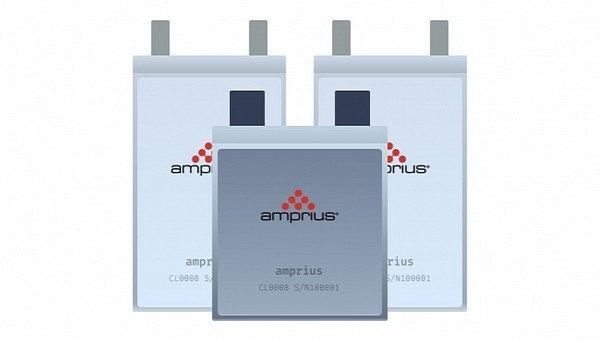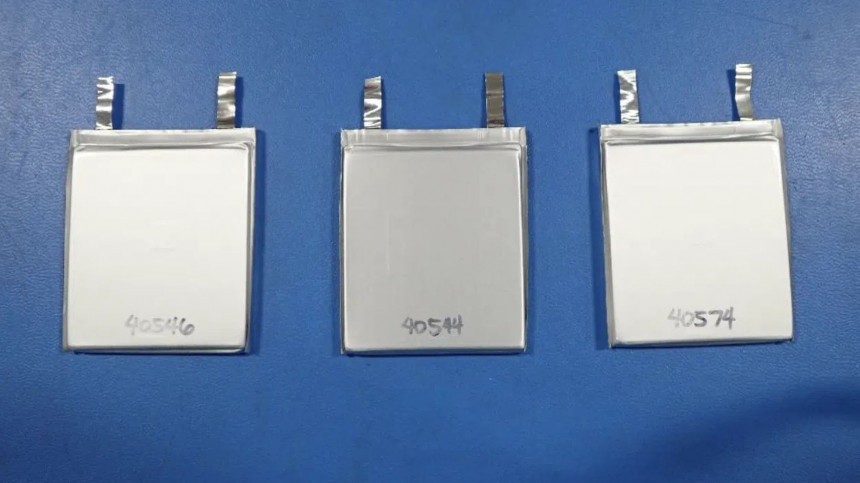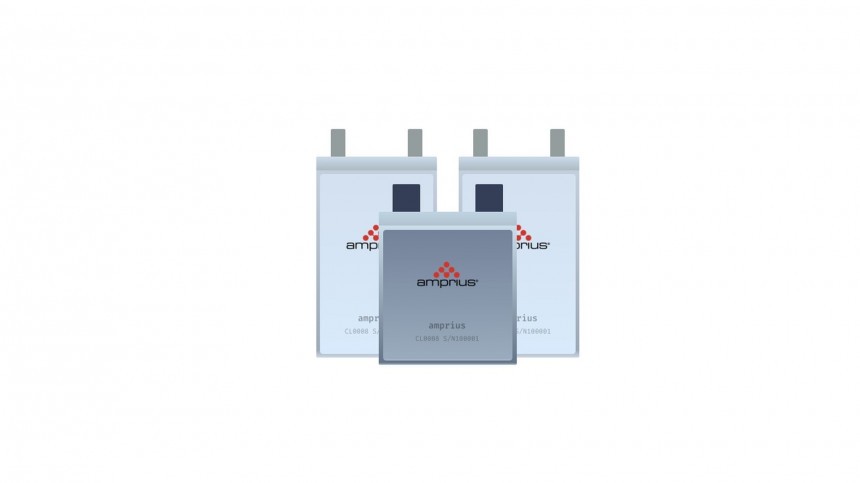The urge to make more energy-dense batteries is not new. On the contrary, it is getting more frequent to hear how crucial it is to make lighter and cheaper electric cars, which totally depends on new tech. The best cells on current EVs deliver around 250 Wh/kg. Amprius showed yet again how much these batteries need to improve by proving that the components it already sells reach 500 Wh/kg.
The confirmation of that energy density came from Mobile Power Solutions. The independent battery test company received three RD1039-R49 cells from Amprius and reported the results on March 17. According to Mobile Power Solutions, these cells offer more than 504 Wh/kg and over 1,321 Wh/l at 25°C (77ºF). That is just part of the story. A more thorough look at the report shows this is the lowest result. The best cell delivered 509.7 Wh/kg and 1,335 Wh/l.
Amprius says its batteries “are well positioned to power products in the fast-growing aviation and, eventually, electric vehicles markets, estimated to be collectively over $100 billion in battery demand by 2025.” The bold is on me. In other words, although these cells are already in use in some applications, they are still not ready for automotive use.
The reason relates either to costs or to how many cycles these Amprius cells can stand. The company’s website does not talk about prices, but it states the batteries can cycle somewhere between 200 and 1,200 times. Supposing a battery pack that delivers 300 miles, we’re talking about a lifespan between 60,000 miles and 360,000 miles. Although the energy density numbers are impressive, the lifespan definitely needs to improve.
The deal with Amprius cells is that you can have a battery pack as big as the current ones offering ranges way above the 300-mile average. As these cells provide double the energy density, they can also make the BEVs run twice as much as they can drive today. The 520 miles of range the Lucid Air has under the EPA tests could translate into 1,040 miles if its battery pack had Amprius cells. Either that or Lucid could theoretically save half the weight to offer the same range it presents today. In practice, the Air could run a lot more than 520 miles with half a battery pack offering the same energy (118 kWh). The reason is it would be a much lighter car.
With 520 miles of range, 200 cycles would mean a lifespan of 104,000 miles, which is still quite low for an automobile. If the minimum number of cycles were 1,200, we would have a much more reasonable lifespan of 624,000 miles. Amprius must be working to ensure it can achieve that with its silicon anode platform. It may be even more advanced than that: it said it is “shipping prototypes to selected customers this year.” Unfortunately, it did not disclose from which industry these buyers come.
If these cells cost a fortune nowadays, a battery pack for 500 miles would use just half of the cells. That implies half of the cost such a component would have with those batteries, eventually on par with how much money a regular battery pack demands. Even if that were still expensive, it would not be a problem for luxury vehicles. That reinforces that technical issues explain why we still do not have any cars with Amprius cells. The sooner that changes, the faster all current BEVs will become obsolete.
Apart from Amprius, we have several companies working with lithium metal anodes, which also promise high energy density and fast charging. Solid-state cells have the same mission. Although Amprius is already selling its silicon anode batteries, they are only for High Altitude Platform Stations (HAPS) so far. That puts them in the same boat as the other two I mentioned here. Whatever these technical developments reserve for the future, it is not here yet. They are still just a promise.
Would we have such technological battery breakthroughs without governments and climate change activists pushing for electric cars? Probably not. Would that be possible without early adopters? Perhaps. There are plenty of products that need better batteries, but none needs them more than cars. Does that mean battery electric vehicles are a feasible alternative to those powered by internal combustion engines? Despite all the BEVs already for sale, the answer is “not yet.” The Amprius silicon anode cells demonstrate that pretty well.
BEVs will be mature enough when replacing their battery packs is not financially prohibitive. When charging does not take half an hour or more but only five minutes or less. When a battery pack does not make a vehicle weigh more than two tons. When the raw materials for cell manufacturing are widely available and do not imply environmental or social burdens to obtain. Above all, they will be ready when those shopping for a used BEV don't worry anymore if they are under warranty or not because they will afford to repair them should the battery pack fail for any reason. We are probably closer to getting there than ever before, but that does not change the fact we are not there yet.
Amprius says its batteries “are well positioned to power products in the fast-growing aviation and, eventually, electric vehicles markets, estimated to be collectively over $100 billion in battery demand by 2025.” The bold is on me. In other words, although these cells are already in use in some applications, they are still not ready for automotive use.
The reason relates either to costs or to how many cycles these Amprius cells can stand. The company’s website does not talk about prices, but it states the batteries can cycle somewhere between 200 and 1,200 times. Supposing a battery pack that delivers 300 miles, we’re talking about a lifespan between 60,000 miles and 360,000 miles. Although the energy density numbers are impressive, the lifespan definitely needs to improve.
With 520 miles of range, 200 cycles would mean a lifespan of 104,000 miles, which is still quite low for an automobile. If the minimum number of cycles were 1,200, we would have a much more reasonable lifespan of 624,000 miles. Amprius must be working to ensure it can achieve that with its silicon anode platform. It may be even more advanced than that: it said it is “shipping prototypes to selected customers this year.” Unfortunately, it did not disclose from which industry these buyers come.
If these cells cost a fortune nowadays, a battery pack for 500 miles would use just half of the cells. That implies half of the cost such a component would have with those batteries, eventually on par with how much money a regular battery pack demands. Even if that were still expensive, it would not be a problem for luxury vehicles. That reinforces that technical issues explain why we still do not have any cars with Amprius cells. The sooner that changes, the faster all current BEVs will become obsolete.
Would we have such technological battery breakthroughs without governments and climate change activists pushing for electric cars? Probably not. Would that be possible without early adopters? Perhaps. There are plenty of products that need better batteries, but none needs them more than cars. Does that mean battery electric vehicles are a feasible alternative to those powered by internal combustion engines? Despite all the BEVs already for sale, the answer is “not yet.” The Amprius silicon anode cells demonstrate that pretty well.
BEVs will be mature enough when replacing their battery packs is not financially prohibitive. When charging does not take half an hour or more but only five minutes or less. When a battery pack does not make a vehicle weigh more than two tons. When the raw materials for cell manufacturing are widely available and do not imply environmental or social burdens to obtain. Above all, they will be ready when those shopping for a used BEV don't worry anymore if they are under warranty or not because they will afford to repair them should the battery pack fail for any reason. We are probably closer to getting there than ever before, but that does not change the fact we are not there yet.









